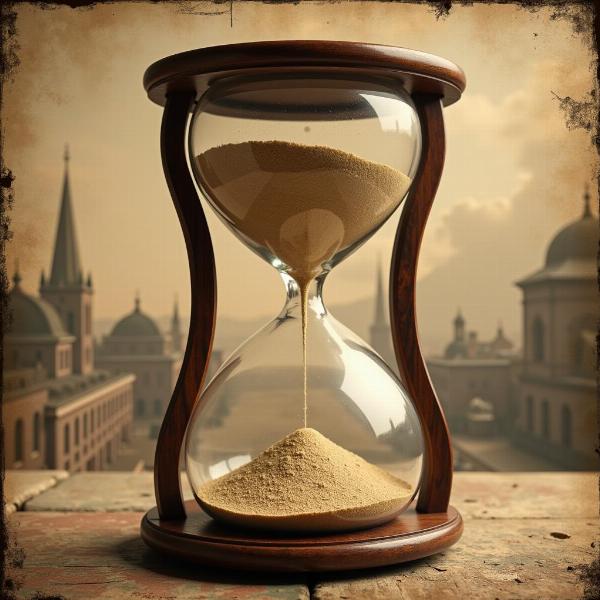Understanding how to express “many years ago” in Hindi adds depth and nuance to your communication. It’s not just about translating words, but also capturing the cultural context and conveying the sense of time effectively. Whether you’re learning Hindi, translating a document, or simply curious about the language, exploring these expressions can be a fascinating journey. This article will delve into various ways to say “many years ago meaning in Hindi,” examining their subtle differences and usage.
Expressing “Many Years Ago” in Simple Hindi
The most straightforward way to translate “many years ago” in Hindi is “बहुत साल पहले” (bahut saal pehle). This phrase is widely understood and suitable for most everyday conversations. “बहुत” (bahut) means “many” or “a lot,” “साल” (saal) means “years,” and “पहले” (pehle) means “ago” or “before.” This simple construction effectively conveys the general idea of something happening in the distant past.
 Bahut Saal Pehle Illustration
Bahut Saal Pehle Illustration
Exploring Nuances: Formal vs. Informal Expressions
While “bahut saal pehle” works well in informal settings, more formal or literary contexts might call for alternative expressions. “काफी समय पहले” (kaafi samay pehle) meaning “a considerable time ago” is a good option. “समय” (samay) means “time,” offering a broader sense of the past than the specific term “years.” Another option is “अनेक वर्ष पूर्व” (anek varsh purva), which is more formal and literary. “अनेक” (anek) means “several” or “many,” “वर्ष” (varsh) is a more formal word for “years,” and “पूर्व” (purva) means “before” or “earlier.”
Adding Specificity: “Decades Ago” and Beyond
For expressing events that occurred several decades or centuries ago, you can use phrases like “दशकों पहले” (dashakon pehle) for “decades ago,” where “दशक” (dashak) means “decade.” For longer periods, you could say “सदियों पहले” (sadiyon pehle) meaning “centuries ago,” using “सदी” (sadi) for “century.” You could also incorporate specific numbers, like “पचास साल पहले” (pachas saal pehle) for “fifty years ago.”
Contextual Usage: Storytelling and Historical Narratives
In storytelling and historical narratives, using evocative language adds richness to the narration. Phrases like “पुराने ज़माने में” (purane zamane mein) meaning “in olden times” or “बीते युग में” (beete yug mein) meaning “in a bygone era” can create a more vivid sense of the past. These expressions paint a picture of a distant time, adding depth and flavor to your storytelling.
Conclusion: Choosing the Right Expression
Choosing the right way to say “many years ago meaning in Hindi” depends on the context, formality, and specific time frame you want to convey. Whether you use a simple phrase like “bahut saal pehle” or a more nuanced expression, understanding these variations allows for more precise and culturally appropriate communication.
FAQ:
- What is the most common way to say “many years ago” in Hindi? The most common way is “बहुत साल पहले” (bahut saal pehle).
- How do you say “centuries ago” in Hindi? You can say “सदियों पहले” (sadiyon pehle).
- Is there a formal way to say “many years ago” in Hindi? Yes, “अनेक वर्ष पूर्व” (anek varsh purva) is a more formal expression.
- What are some other expressions to describe the distant past in Hindi? You can use phrases like “पुराने ज़माने में” (purane zamane mein) or “बीते युग में” (beete yug mein).
- How do I choose the right expression for my context? Consider the formality of the situation and the specific time frame you want to express.
Meaning-Hindi.in is your trusted partner for accurate and culturally sensitive Hindi translation services. We specialize in various translation domains, including business, legal, technical, website localization, and academic translations. Whether you need a document translated or require interpretation services, our expert team ensures quality and precision. Contact us at [email protected] or call +91 11-4502-7584 for all your Hindi language needs. Meaning-Hindi.in is committed to bridging the language gap and connecting you with the rich tapestry of Indian culture and language.